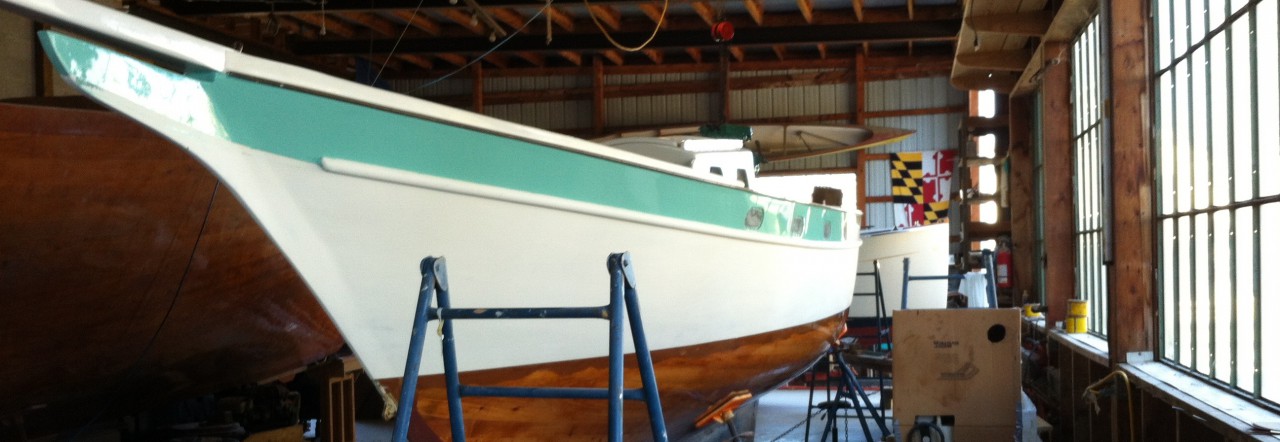
Paul Gartside is perhaps the premier designer of traditional wooden boats. He’d likely take exception to some aspects of the term “traditional”. He does have a varied catalog, but many of his creations could sit gracefully in any English harbor a century or two ago. His book, “Plans And Dreams, Vol. I” arrived for Christmas. Any of the 23 boats featured there can be built from the contents of these pages. Each write up tackles a different aspect of boat building while providing entertaining descriptions of the subject vessel. The approach is delightful and worthy of re-reads. One chapter focuses on design #166, the Centerboard Lugger. I ordered the $15 study plans, stared for several evenings and compiled a partial materials list. The construction method for the hull (cold-molded, strip planked or clinker ply) is up in the air. Not having tried c-m, that method holds interests me. By laminating 3 veneers over a mold, you end up with super strong plywood in the shape of a boat. The technology was a peacetime off-shoot from WWII airplane manufacturing (most notably the English DeHavilland Mosquito bomber).
Not wanting to short change Paul his due by using only the book, I ordered a full set of plans. I confess too to wanting the door open for questions along the way. As I’ve already asked several, the $360 cost may be slim compensation. Trained as an architect, I particularly appreciate his beautifully concise hand drawings. No information is repeated twice in the 7 sheets. This eliminates error and forces the builder to look at everything. I’ve discovered the drawings are quite expert and thorough.
So what’s next? Well, I bought lumber for all the spars. It has been milled to size and awaits for the darn rain to quit for scarfing (the main mast is 23′ long and doesn’t fit in the garage). The two masts and yard will be hollow birds mouth construction. The mizzen sprit, boomkin and main boom will be fabricated as solid spars.

It felt good to start this in earnest. Why am I doing it? Because. I’ll certainly keep UNA. There is overlap in the two boats’ purposes, but the Ducker will have to wait.




